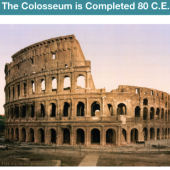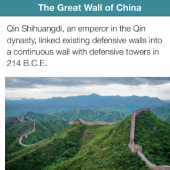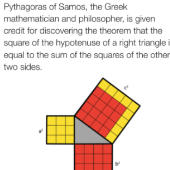Organized Central Government: As cities developed and expanded, the food supply and irrigation systems needed to be managed and maintained. Governments, such as councils or religious leaders, began to oversee the business and existence of the cities.
Art and architecture: Art and architecture often expressed the beliefs and values of a civilization. Different styles were developed and copied by societies over the years. The most important structures were often the most elaborate and built of lasting materials.
Job Specialization: As societies became more complex, artisans and craftsmen were needed to make specific items and/or perform special tasks. This meant that people concentrated on knowing how to do one thing well, such as teaching, scribing, stonecutting, and so forth.
Social classes: As jobs became specialized, the status of certain individuals was elevated. If the job was deemed essential to the people, it had a higher status. A knowledgeable and educated religious leader, for example, was more respected than an unskilled worker. Herders were needed and respected for the food they provided, while masons were needed for building. A slave was on the lowest rung of the social ladder while warriors and kings were at the top.
Complex Religions: Religious leaders conducted elaborate ceremonies to appease the gods (polytheism) and ensure a bountiful harvest. Floods and droughts were blamed on the gods’ anger, so rituals were conducted in the temples in an attempt to keep the gods happy.
Public Works: The government was responsible for projects that were a benefit to all the people, such as defensive walls to protect from attack, canals to irrigate the fields, sewers and water systems to insure the health, well-being, and survival of its people.
Writing: Writing skills were needed to record traded goods and stores of food because the information became too great to remember. In addition, writing became necessary in order to express ideas that were too complex for pictures or spoken words.
Cities: As farmers settled in fertile river valleys, they began to grow surplus, or extra, food. This extra food increased the population of the settlements. In time, the settlements grew into cities, such as Ur in Sumer or Babylon in Mesopotamia.
The Greek Alphabet 740 B.C.E.: The Greek alphabet was born when the Greeks adapted the Phoenician writing system to represent their own language by developing a fully phonetic writing system composed of individual signs arranged in a linear fashion that could represent both consonants and vowels.
Sima Qian, historian of China, born 135 B.C.E.: Sima Qian was the grand historian to the court of Emperor Wu of the Han dynasty. While serving at the court, his father took on a project to write the history of the known world. He did not get very far with his project before he died. He asked his son to finish the project. Sima Qian followed in his father’s footsteps, serving Emperor Wu as Grand Historian and pursuing the project to record the history of the world, China, and its neighbors. Sima Qian’s completed project, Records of the Grand Historian, is considered one of the first recorded histories.




Chang-An: The Han dynasty succeeded the Qin [and] initially chose Luoyang to the East as its capital, but then in 202–200 B.C.E. (to the south of the Qin capital) began construction of Chang-an, “the rst great city in Chinese history.”
The Temple of Poseidon: The Temple of Poseidon was constructed in approximately 440 B.C.E., over the ruins of a temple dating from the Archaic Period [of ancient Greece]. It is perched above the sea at a height of almost 230 ft. The design of the temple is a typical hexastyle, i.e., it had a front portico with six columns. Only some columns of the temple stand today.